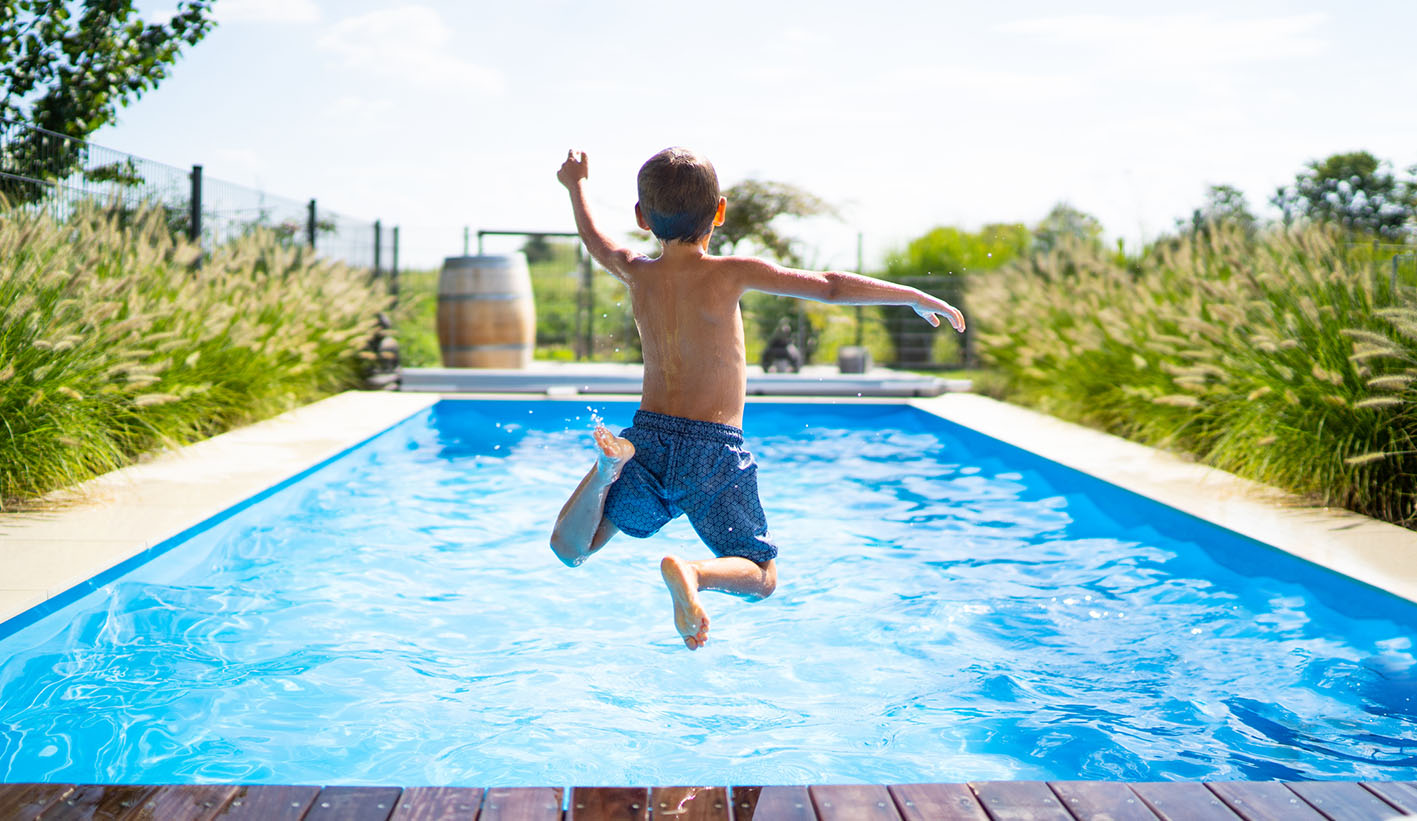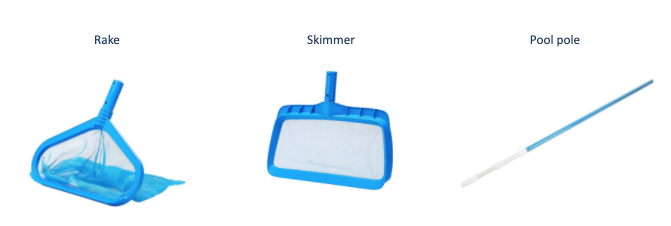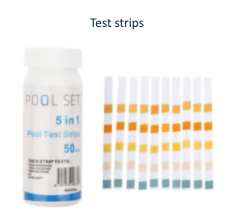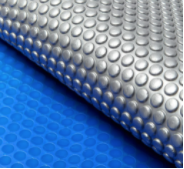
Pool Care Basics
It doesn’t have to be difficult and complicated to keep your pool in great shape. Follow some easy steps to get the basics right and your pool will be set to be the envy of the street. There are three important concepts to follow.
-
Circulation
-
Cleaning
-
Chemistry
WATER CIRCULATION
Just like in the great outdoors, moving water is cleaner. When you see a still body of water its more than likely got a whole bunch of nasties breeding and growing inside it. On the other hand, when you ever see a stream of running water or a cascading waterfall its always crystal clear. We should take this lesson from nature and make it the cornerstone of good pool maintenance.
What we need to do is keep a regular flow of water using a pool pump that moves water through a filtration system. Ideally the pump should turn over the entire volume of pool water a couple of times a day. This means running the pump about 8 hours a day depending on your pool size and pump size. How long you run the system also depends on how often you are using the pool. During winter when people are not swimming you can run the system less and in the heat of summer more.
There is a choice of filtration system available but all have the following features:
-
A skimmer box where the inflow of water carries surface debris such as leaves and oil into the start of the filtration system
-
A leaf basket in the skimmer box which traps the leaves and large debris before the water is sucked through to the pump. This should be emptied once a week.
-
A secondary basket in the front of the pump which also needs to cleared once a week.
-
A circulation pump
-
A filter which physically removes solids from the water. This will either be a sand filter type or a cartridge filter type
-
Pipework through which the clean water returns to the pool
Another key to keep good water circulation is making sure you keep the pool filter clean. If you have a sand filter this mean backwashing regularly. Backwashing is another way of saying reversing the flow of water through filter to get rid of the all gunk its filtering. If you are using a cartridge filter then you will need to remove the cartridge filter element inside and hose it clean.
POOL CLEANING
There is no escaping mother nature depositing leaves, sticks and general debris into the pool. This along with residues, shampoos, sunscreen and hair products that come from swimmers makes it imperative to clean your pool regularly. This is usually a mixture of manual cleaning and automatic cleaning equipment. The basics here are scooping, brushing and vacuuming.
SCOOPING
Every few days you should remove leaves, debris and anything else that has fallen onto the pool surface. Use a shallow net skimmer for clearing debris from the surface of the pool and the deeper rake for getting leaves and debris from the bottom of the pool.

BRUSHING
Regular brushing of the pool walls and floor will help to reduce algae build up and calcium deposits. Use the soft bristled broom to remove silt and light stains. On deeper stains and heavy algae, the wire bristle brush can be used but be careful to only use sparingly and only on surfaces that cannot be scratched.

VACUUMING
Pools should be vacuumed at least once a week to keep the water clear of debris and dust which also reduces the amount of chemicals you need use. The easy way is to setup an automatic pool cleaner that will cover the pool floor and walls and if you have a timer setup it will turn on for set hours each day. An automatic pool cleaner takes a lot of the hard work out of vacuuming but there may be times you need to do an extra vacuum or a deeper clean. This is where manual cleaning comes into play. You will need a vacuum head, telescopic pole and vacuum hose to do a manual clean.

HOT TIP #1
You can make your cleaning life easier with some unusual additions. Sometimes you may find the pool has become full of fine silt which is not getting caught by the filter. This can often make the pool cloudy. Just add a filter sock onto the skimmer box basket and run the system for a few hours or until the water becomes clear. Make sure you remember to clear or remove the sock if it fills up or water circulation will be affected.
HOT TIP #2
If you have stirred dust and silt up at the bottom of the pool during brushing a good way to remove is by attaching your manual vacuum to the system and leave it upside down at the bottom of the pool. This will drain out the silty water.
WATER CHEMISTRY
Pool water must be maintained all year round to make sure it is safe, clean and healthy. Contamination of pool water can be caused by a variety of things including rain water, runoff, dirt, debris as well as sunscreen and natural body oils. To control the contamination of water it needs to be regularly tested and maintained.
There are a many kinds of testing kits available but most are either liquid drop kits or test strips. Test strips are an easy and quick way to regularly test the pool water. They work by submerging the strip in the pool for a few seconds and then you match the colours against the chart on the bottle which indicates a chemical reading.

PH: measures how acidic or alkaline the pool water is. A reading of 7 is neutral with value blow 7 showing acidity and values above 7 showing alkalinity. The preferred range is between 7.2 and 7.6. Heavy rain, filling up your pool and lots of swimming can change the PH level. If the water becomes unbalanced it may cause skin discomfort and damage the pool surface or equipment. Unbalanced PH can also hinder the sanitization process
Chlorine: To protect the pool water from viruses, bacteria, algae and germs the water needs to be sanitized. Chlorine is the most popular form of water sanitization. When using a salt water chlorinator which makes chlorine via electrolysis of salt, the PH should be at the correct value to ensure effective sanitization.
Alkalinity: total alkalinity is the total concentration of bases and dissolved solids in the water which are made up of bicarbonates, carbonates and hydroxides. These elements act as a buffer against changes in PH. Fiberglass pools should be between 60-200ppm and concrete pool should be between 140-160ppm. Low levels make water aggressive causing unstable PH and potentially causing damage to the pool surface and equipment. High levels decrease the sensitivity of PH and results in high PH and lower chlorine effectiveness as well as scale formation and cloudy water.
Hardness: is the measure of calcium dissolved in the water. Low calcium is soft water which can be corrosive. Soft water draws out calcium and other minerals from pool surfaces and equipment. High levels are regarded as hard water and causes calcium deposits and build up to form on the walls and pipes of the pool and equipment. Recommended range is between 80-500ppm.
Stabilizer: Sunlight removes chlorine from the water. By adding a stabilizer (cyanuric acid) you can reduce the amount of chlorine destroyed from UV light. A stabilizer is mostly required in summer. It is recommended that your pool water is stabilized at the beginning of summer and checked every month. Levels should be between 30-50ppm.
HOT TOP #3
A great way to reduce the amount of chemicals needed to keep pool water sanitised is by using a pool cover. They also reduce water evaporation and keep falling debris out of the pool. Sunlight will naturally evaporate chlorine from the water so using a pool cover will save you dollars in chemicals. Covers can be cut to fit the shape of your pool,

KEEPING IT SIMPLE
The most important part of pool maintenance is making sure you keep a simple but regular schedule. If you keep on top of circulation, cleaning and chemistry and don’t let them slip then it will save you big dollars and whole lot hassle in the long run.

The information provided by the Poolset website must not be relied upon or regarded as a substitute for specific professional advice. We make no claim that the website is 100% accurate or suitable for an individual's unique circumstance and provide the website on the basis that all persons accessing the website responsibly assess the relevance and accuracy of its content.



